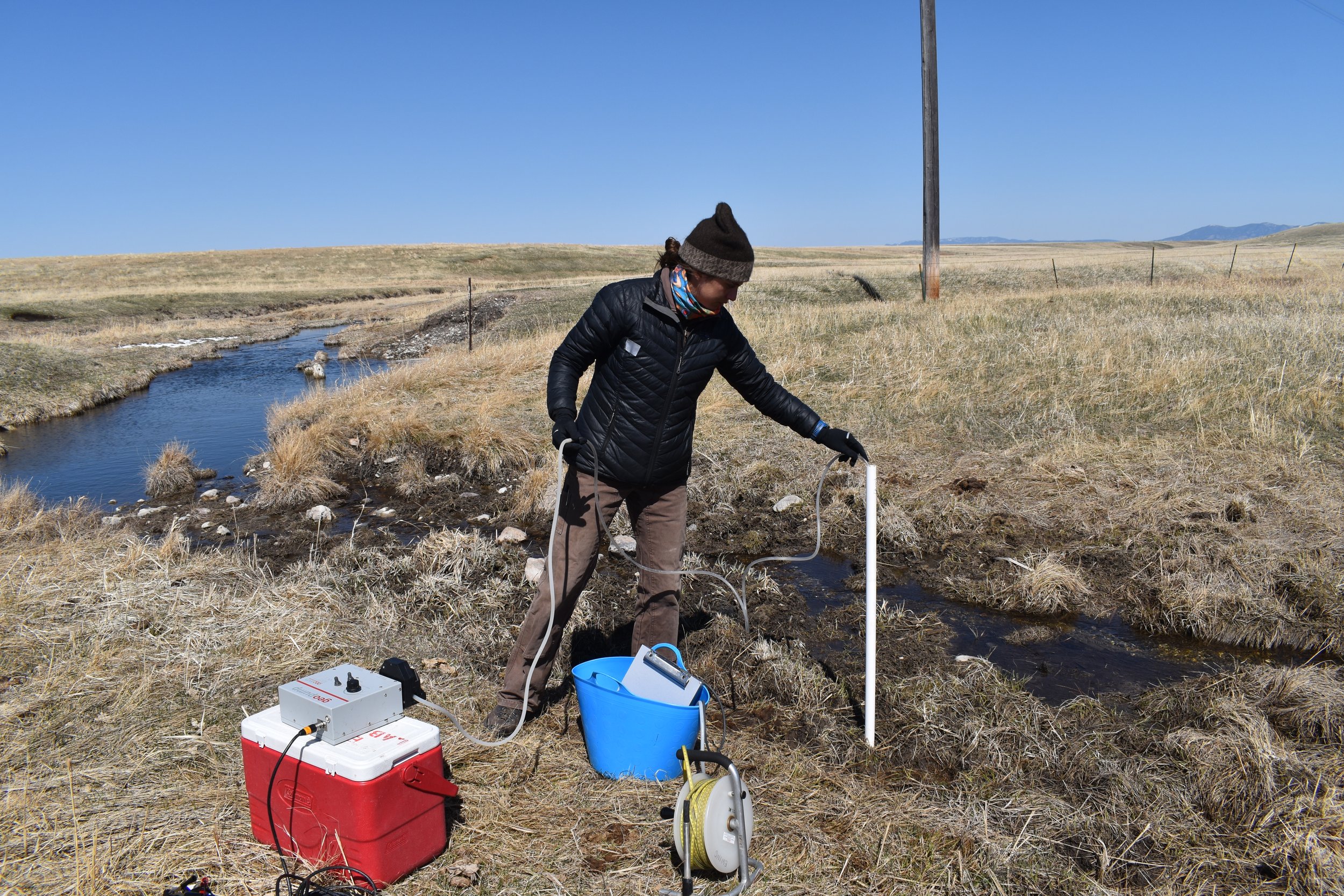caitlin mayernik
Riparian corridors control stream concentrations of excess nitrate delivered from non-irrigated cultivated soils in semiarid climates
Nitrate loading to terrestrial and aquatic systems in response to increasing demands on food production threatens human health and ecosystem integrity. Relative to land cover area, riparian ecosystems are disproportionately important to inorganic nitrogen export from watersheds, yet we have limited understanding of the fundamental processes influencing biogeochemical pathways in these systems. This research investigates how water movement through riparian corridors drives nitrate transport and transformation in semi-arid agricultural landscapes. The research is motivated by the overarching question: How does the distribution of water supply to upland and riparian soils interact with soils and land management practices to drive nitrate fate and transport across a dryland agricultural landscape? Solute concentrations and isotopic compositions are used as tools to investigate hydrologic transport and biogeochemical transformation of nitrate and sulfate within and across riparian ecosystems. Riparian corridors vary in their extent of subsurface connection to terrace groundwater inflows and stream waters, the depth of riparian soils to riparian aquifer, and vegetation management. These characteristics influence biogeochemical processing and are evident in the spatial and temporal variation in solute concentrations observed within and across our study site. This research explores differences in solute concentrations as a function of variation in these character traits to infer the heterogeneous riparian processing pathways that mitigate consequences for downstream water quality.
After her undergraduate work in environmental sciences at Virginia Tech, Caitlin moved to western Montana where she worked for a conservation organization in the Blackfoot River watershed. During that time, Caitlin expanded her knowledge and experience in natural resource work involving a range of stakeholders. She recognized a need for advanced research in soil science and water quality to improve crop and rangeland production while conserving ecological and economic integrity and sustaining rural communities. Caitlin’s interest in such interdisciplinary work led her to the research of Dr. Stephanie Ewing and the NSF EPSCoR funded project in the Judith River Watershed. This research sits at the nexus of soil science, groundwater hydrology, applied science, and social impacts – a center around which she plans to continue to build her career. In her free time, Caitlin enjoys adventuring with her husband and dogs, building meaningful relationships, gardening, cooking, and spending time at home in Montana’s Swan River Valley.



